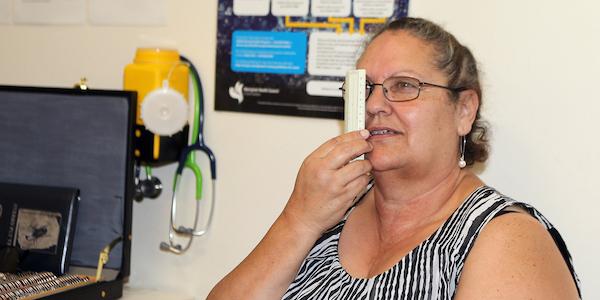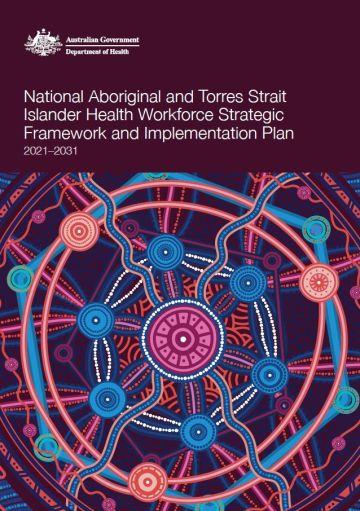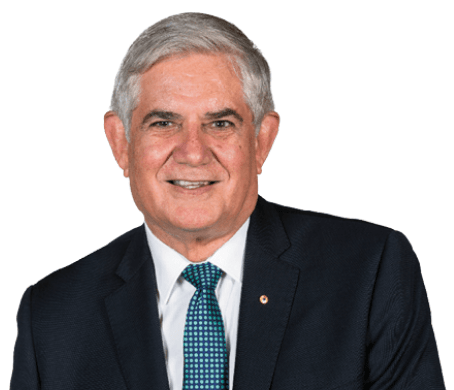1:30min
 The Federal Government has launched a 10-year workforce plan to increase the number of Aboriginal and Torres Strait Islander workers in the health system in the aim of improving health and wellbeing outcomes for Indigenous Australians.
The Federal Government has launched a 10-year workforce plan to increase the number of Aboriginal and Torres Strait Islander workers in the health system in the aim of improving health and wellbeing outcomes for Indigenous Australians.
 The National Aboriginal and Torres Strait Islander Health Workforce Strategic Framework and Implementation Plan 2021-2031 (National Workforce Plan) is the first of its kind, and its objective is to have Aboriginal and Torres Strait Islander people equally represented alongside non-Indigenous workers across the health sector by 2031.
The National Aboriginal and Torres Strait Islander Health Workforce Strategic Framework and Implementation Plan 2021-2031 (National Workforce Plan) is the first of its kind, and its objective is to have Aboriginal and Torres Strait Islander people equally represented alongside non-Indigenous workers across the health sector by 2031.
Optometry Australia CEO Lyn Brodie said of the announcement: ‘We welcome the launch of the National Workforce Plan and its aim of increasing Indigenous representation across the health sector to allow for the delivery of culturally safe and responsive care for Indigenous Australians.
‘Aboriginal and Torres Strait Islander peoples and communities deserve to experience equity in health outcomes, including in eye care. Our organisation has a deep respect for the unique contribution of Aboriginal and Torres Strait Islander peoples to Australia and the health system landscape, and we look forward to seeing more Indigenous workers included in our workforce within the next decade and beyond.’
Designed in close partnership with Aboriginal and Torres Strait Islander people, the National Workforce Plan aims to lift the rate of Indigenous people working in the health sector from the current 1.8 per cent to 3.43 per cent by 2031 to better reflect overall population numbers.
This will mean an extraordinary increase in the number of Indigenous doctors, nurses, midwives, allied health professionals, health workers and health practitioners working across the health system, providing culturally safe and responsive health and medical care.
The Federal Government has committed over $53 million to implement this plan from the coming financial year (2022-23) to 2025-26.
Launched by Minister for Health, Greg Hunt, and Minister for Indigenous Australians, Ken Wyatt, the National Workforce Plan complements the 2020 National Agreement on Closing the Gap and the refreshed National Aboriginal and Torres Strait Islander Health Plan.

In a joint media release, Minister Hunt said: ‘The National Workforce Plan sets an ambitious and achievable target. Not only will it expand across to culturally safe care and significantly improve the health outcomes of Aboriginal and Torres Strait Islander people, it will also increase economic prosperity by having First Nations people in well paid, secure employment.’
Minister Wyatt said that the 10-year plan is a strong example of the government working closely in partnership with the Indigenous community to coordinate and deliver an approach supported by those who understand the community best.
‘Growing Aboriginal and Torres Strait Islander workforce participation across the health sector will help ensure culturally-safe, trauma-informed and responsive care is available for families and communities,’ Minister Wyatt said.
‘It will mean Aboriginal and Torres Strait Islander people feel more comfortable to access health services and experience better outcomes when they do.
‘Increasing employment, training and leadership opportunities for Aboriginal and Torres Strait Islander people, and embedding Indigenous knowledge and culture in our health services, will help deliver prevention-focused health services that are free of racism.’
Tagged as: Indigenous eye health